He had a gray snout, and his paws were black, as though he had been running about in the mud and caught the mange. His ears were large and floppy and his tail caught the light. His coat was wavy and dirty, and above his shaggy snout sparkled two eyes which betrayed a very human intelligence, the suggestion of a human soul. In the darkness which had overtaken his life something infinite surged in those eyes, an indecipherable message, caught just behind his pupils. It was neither light nor color. It was something else something unbelievable — like the eyes of a wounded gazelle. But not only was there some similarity between this dog’s eyes and the eyes of a man, but a sort of equality was visible there. Two big brown eyes full of pain and torment and patience, such as can only be found in the face of a stray dog.
— Sadegh Hedayat, “The Stray Dog,” 19421
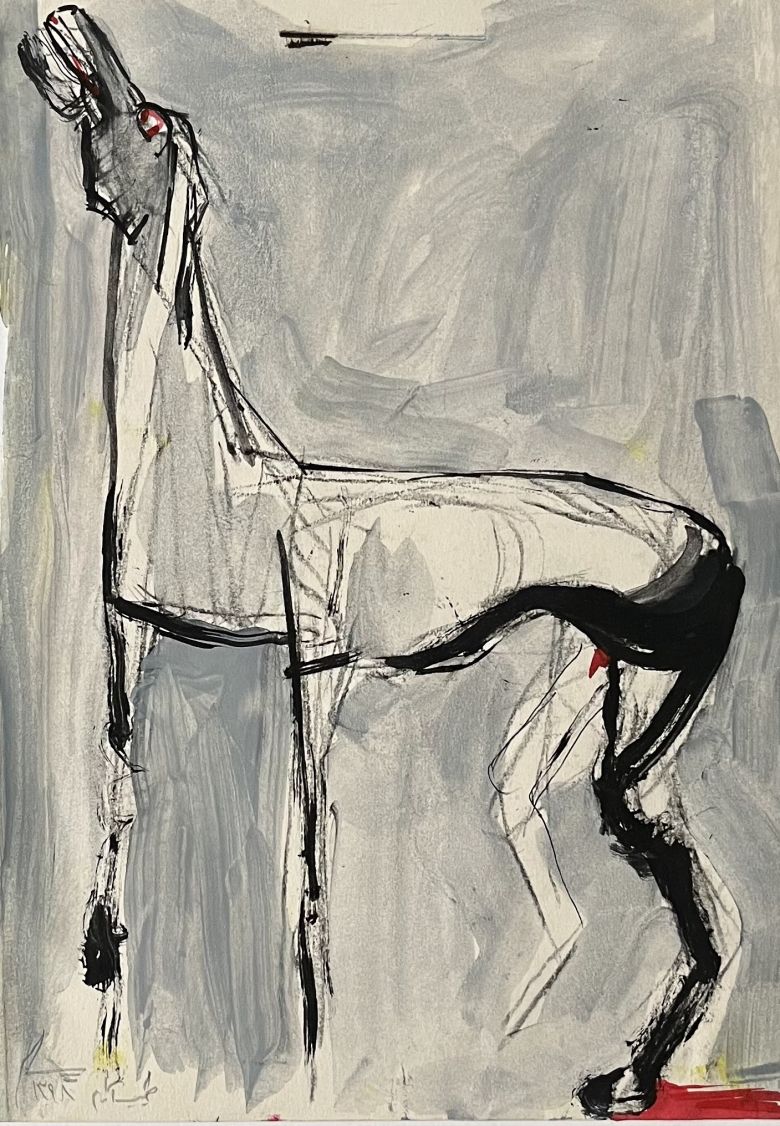
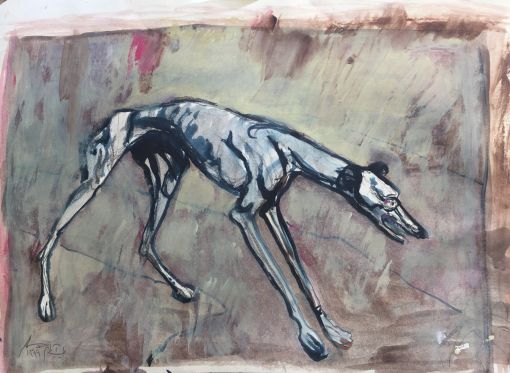
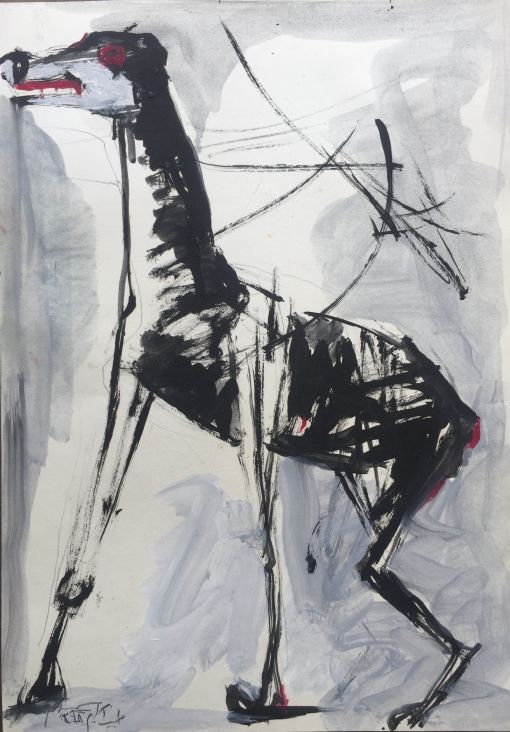
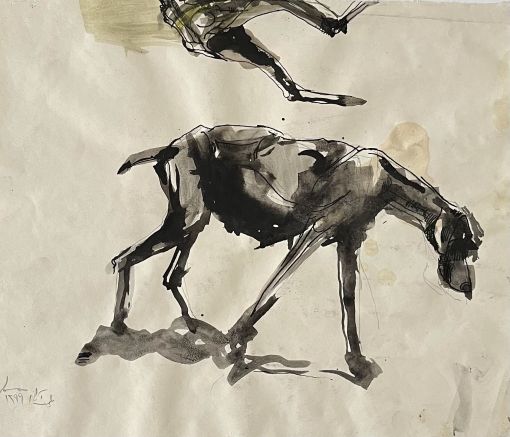
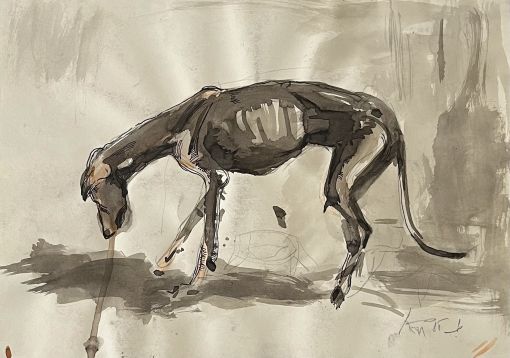
The connections between human life and that of other animals and beings and their mutual effects on one another is not a new issue. However, our cohabitating has lost its balance over the past fifty years — a fact that has put all our lives in danger. In philosopher George Bataille’s words:
Man, despite appearances, must know that when he talks about human dignity in the presence of animals, he lies like a dog. For in the presence of illegal and essentially free beings (the only real outlaws) the stupid feeling of practical superiority gives way to a most uneasy envy.2
In this regard, the dog — humankind’s oldest friend and faithful companion — is the perfect anthropocentric representation of the current tragic situation. From security and guard dogs, to shepherd dogs, to cute lapdogs and stray or abandoned dogs, they all testify to the unjust and contradictory conditions of human life that have transformed the dogs’ lives as well. Nowadays, a large number of dogs live in groups on the margins and outskirts of cities in Iran. Their complicated and problematic relation to the people living in these margins has become a source of fear and worry for many people in recent years, particularly due to weak urban management and limited financial resources in the outskirts.

For a period of time, artist Tabib Aram lived and worked in a sculpture workshop in the margins of metropolitan Tehran, and his art is rooted in his lived experience and daily observations of stray dogs’ lives there: the births and deaths of marginalized beings who play the role of the defeated and the despised within a humancentric discourse. Deprived of basic rights, they are considered as objects rather than living beings.
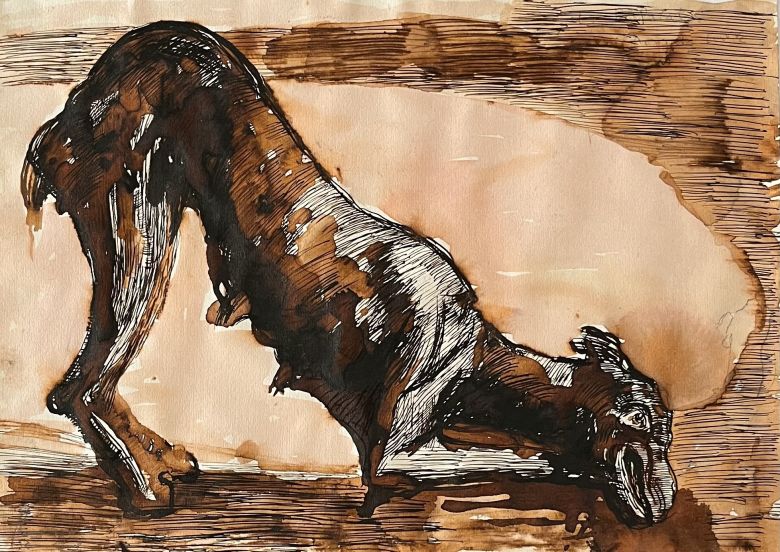

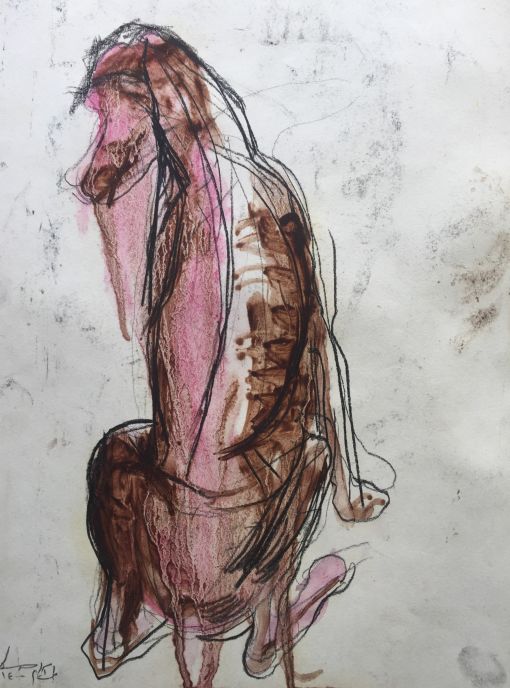
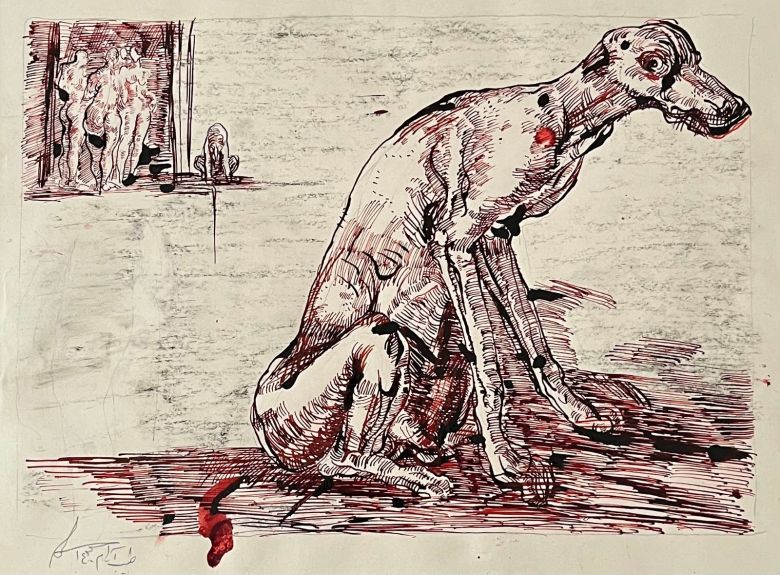
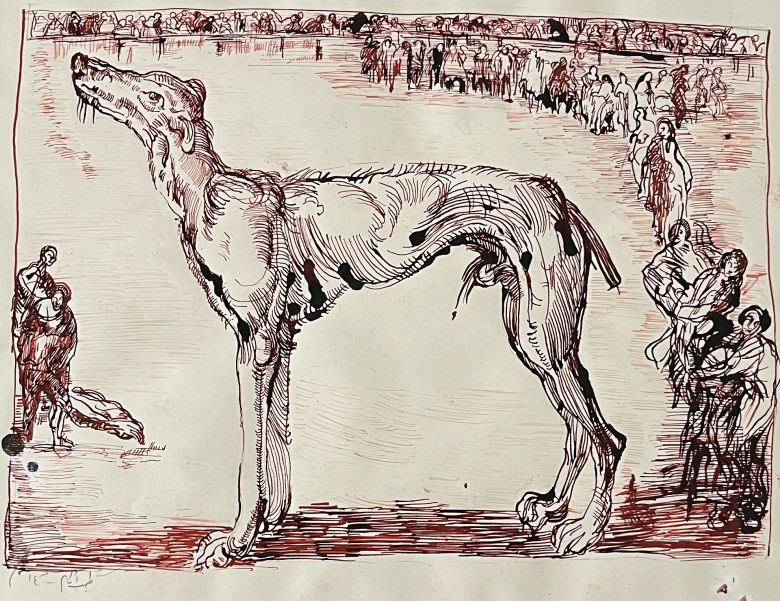
Aram originally belongs to a village near Yasuj, in Kohgiluyeh and Boyer-Ahmad province in southwest Iran. The Outskirts (2017-21) series, exhibited in 2021 at Nian Art Gallery, Tehran, is the outcome of years of studying and working on the environments that make up the margins and outskirts of Tehran, with a focus on dogs. The diversity of techniques and visual approaches reveals his endeavor to expand and deepen his understanding of various aspects of the city’s marginal spaces. His dogs are not dogs in a general sense — as a species among other animals; rather, they are precisely the stray dogs of the city’s margins. This is an intentional choice that echoes his immediate, lived experience and social conditions.
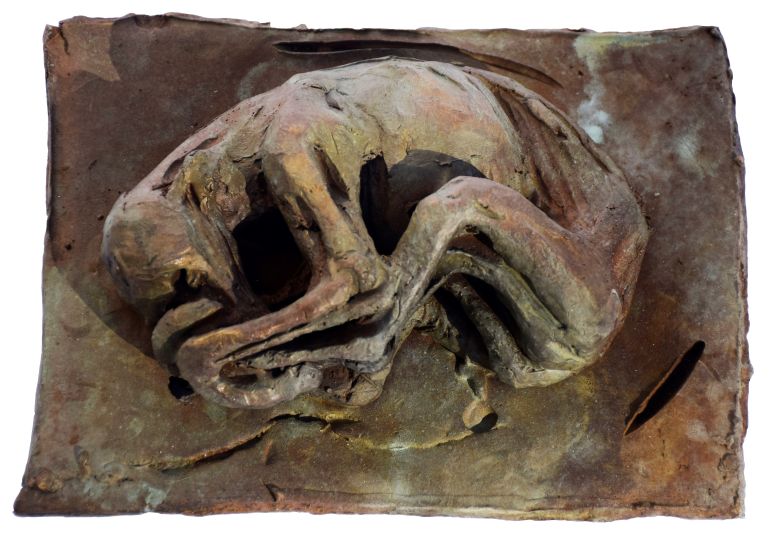
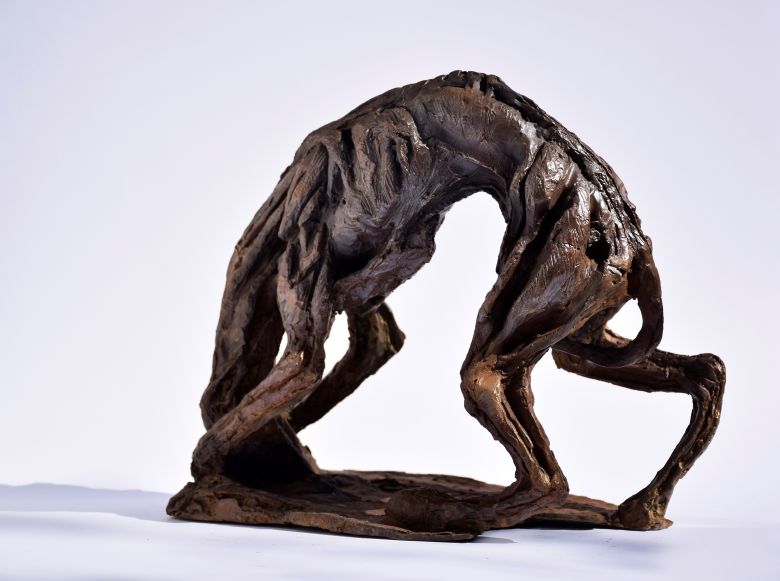
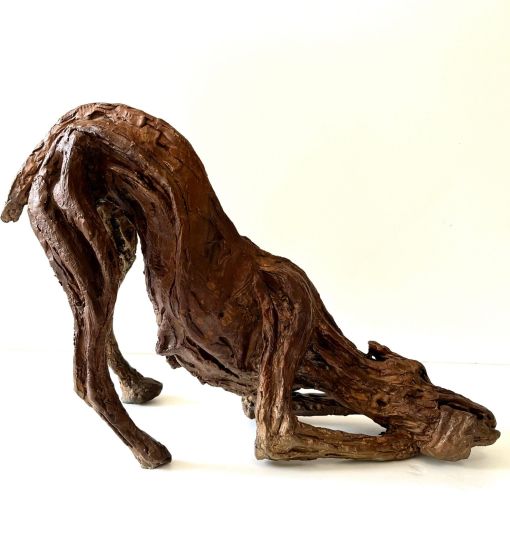
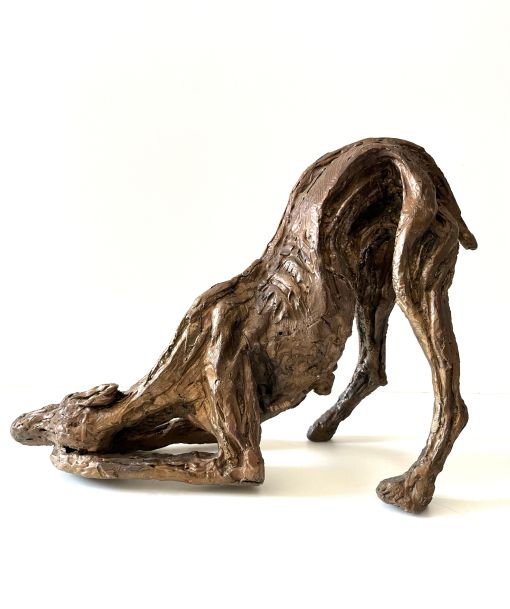
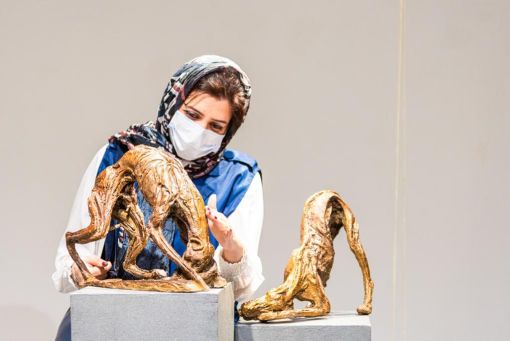
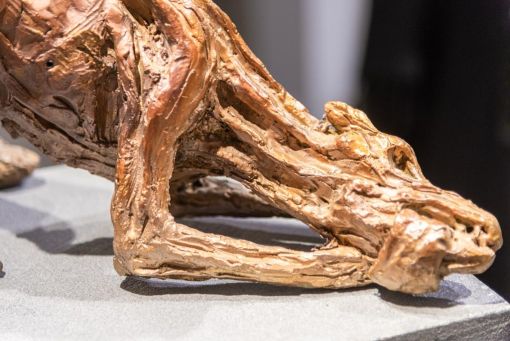
The unleashed and extensive expansion of urban space has resulted in a highly incoherent, disintegrated space at the city borders, with multiple urban problems. Many people as well as animals are increasingly being pushed to these margins, and within the dominant discourse, they are seen as downgraded, maladaptive, and malformed beings — a threat to the established order. Although the margin is connected to urban space, its inhabitants take on a different identity, due to their presence in a detached structure. Here also dogs — our historical companions, abandoned and forsaken — are left to themselves in deteriorating nature, where, futile and detached, they are transformed into ‘stray’ dogs. As the representatives of the abandoned part of the society, deprived of glory, with their thin, lean legs and fallen ears, they wander in the margins.
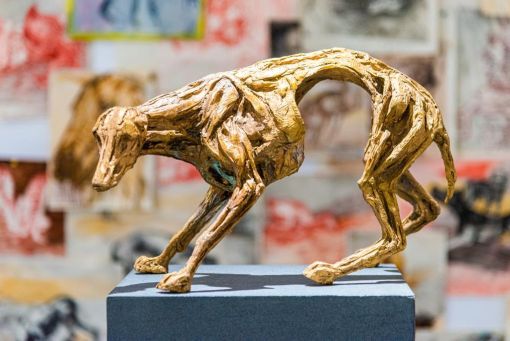
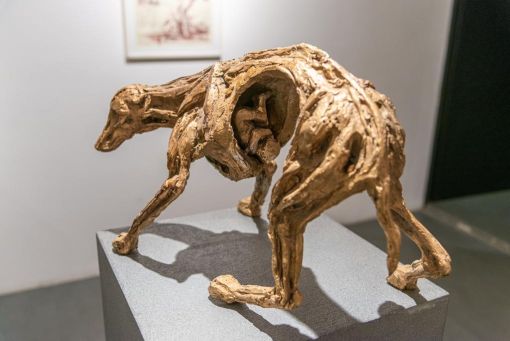
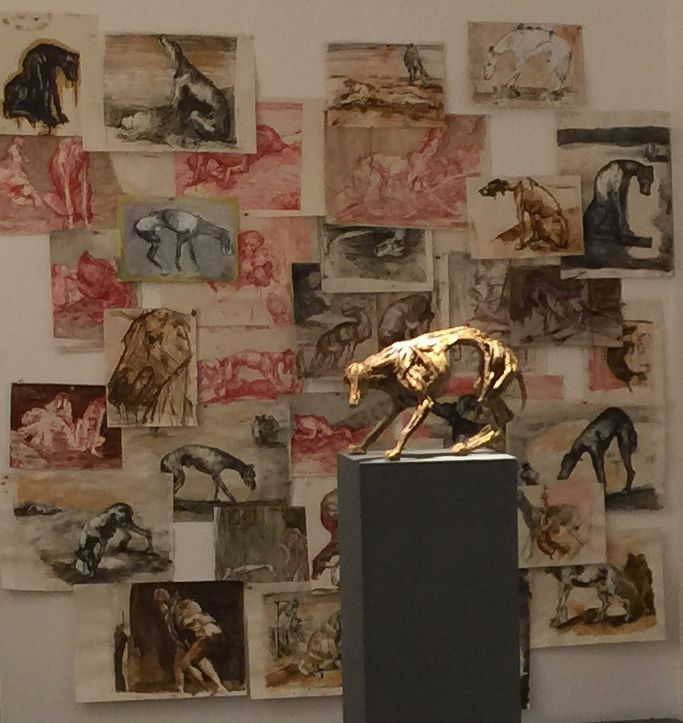
Aram’s sculptures and drawings demonstrate a passionate search for the expressive potentials of the nonhuman as an allegory of human concepts and emotions. His works demonstrate a deep human condition, which emerges through hollowed-out textures and body forms in connection to the environment’s conditions. The body is the symbol of injustice, and the locus of malnutrition, sickness, and fear. The margin’s dogs are the incarnation of hunger, insecurity, and all those contradictions that reveal themselves through interlocked muscles and empty spaces: they expose the fate of a rejected minority, seen as a terrible and irreparable mistake, condemned to destruction and death.
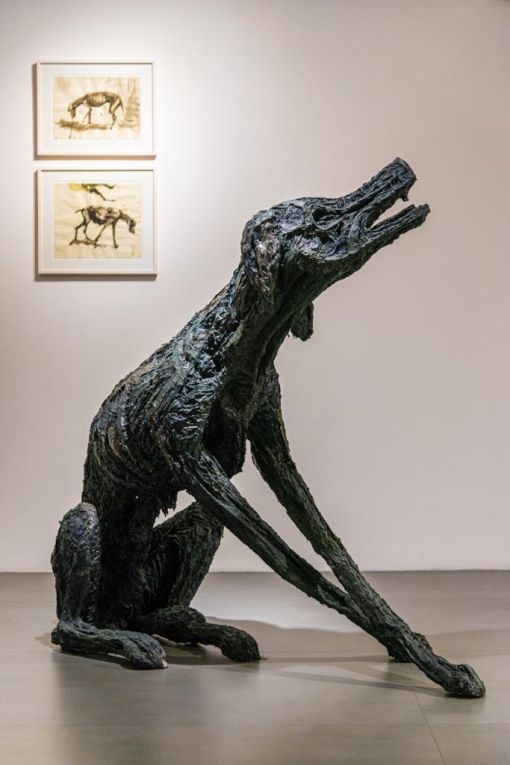
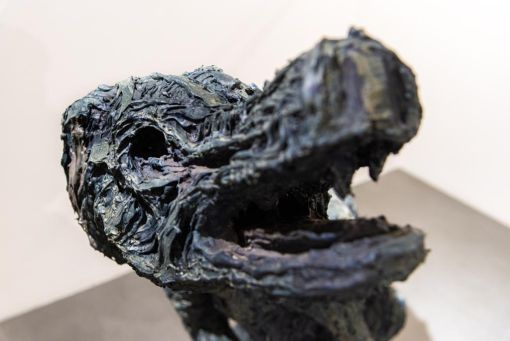
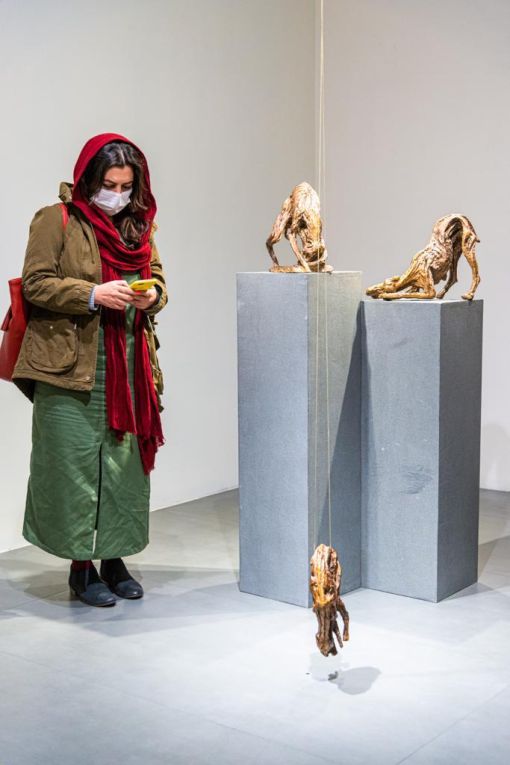

Aram seeks to recognize both himself and our human life in the mirror of the nonhuman. He chooses to portray non-sublime, ordinary, and unfavorable gestures. He chooses purely doggy moments — and this is an intentional choice based on the artist’s deep acquaintance with these dogs. Aimlessness, passivity, surrender, and submission to the ongoing situation are manifest, in a purely naked way, in the margins’ dog. The Outskirts is where the center and the margin meet. It is the symbol of an unequal and inhuman fight at the core of a totally human world.
Translated from Farsi by Golnar Narimani
1 Sadegh Hedayat, “The Stray Dog” (1979), trans. B. Spooner, in Sadeq Hedayat: An Anthology, ed. Ehsan Yarshater (Boulder, CO: Westview, 1979), 120.
2 Georges Bataille and Annette Michelson, Metamorphosis, October, no. 36 (1986): 22–23.
Tabib Aram, Negar Naderipour, “In the Margins,” in mohit.art NOTES #1 (April 2023); published on www.mohit.art, March 24, 2023.